Related Research Articles
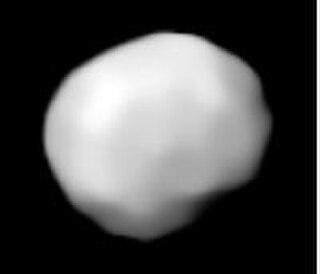
704 Interamnia is a large F-type asteroid. With a mean diameter of around 330 kilometres, it is the fifth-largest asteroid, after Ceres, Vesta, Pallas and Hygiea. Its mean distance from the Sun is 3.067 AU. It was discovered on 2 October 1910 by Vincenzo Cerulli, and named after the Latin name for Teramo, Italy, where Cerulli worked. Its mass is probably between fifth and tenth highest in the asteroid belt, with a mass estimated to be 1.2% of the mass of the entire asteroid belt. Observations by the Very Large Telescope's SPHERE imager in 2017–2019, combined with occultation results, indicate that the shape of Interamnia may be consistent with hydrostatic equilibrium for a body of its density with a rotational period of 7.6 hours. This suggests that Interamnia may have formed as an equilibrium body, and that impacts changed its rotational period after it fully solidified.

Makemake is a dwarf planet and the second-largest of what are known as the classical population of Kuiper belt objects, with a diameter approximately that of Saturn's moon Iapetus, or 60% that of Pluto. It has one known satellite. Its extremely low average temperature, about 40 K (−230 °C), means its surface is covered with methane, ethane, and possibly nitrogen ices.
Athalia, provisional designation 1903 ME, is a carbonaceous Themistian asteroid from the outer regions of the asteroid belt, approximately 40 kilometers in diameter. It was discovered on 20 September 1903, by German astronomer Max Wolf at the Heidelberg Observatory in southwest Germany. The asteroid was named after the ancient Judahite queen Athaliah.

698 Ernestina is a background asteroid, approximately 27 kilometers in diameter, located in the outer regions of the asteroid belt. It was discovered on 5 March 1910, by German astronomer Joseph Helffrich at the Heidelberg-Königstuhl State Observatory. The presumed carbonaceous C-type asteroid has a rotation period of 5.0 hours. It was named after Ernst Wolf, son of German astronomer and prolific discoverer of minor planets, Max Wolf.
813 Baumeia is a stony background asteroid from the inner regions of the asteroid belt. It was discovered on 28 November 1915, by German astronomer Max Wolf at the Heidelberg Observatory in southwest Germany. The common S-type asteroid has a rotation period of 10.5 hours and measures approximately 12 kilometers in diameter. It was named for H. Baum, a German student of astronomy at Heidelberg who was killed in World War I.
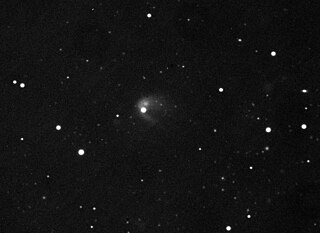
Active asteroids are small Solar System bodies that have asteroid-like orbits but show comet-like visual characteristics. That is, they show a coma, tail, or other visual evidence of mass-loss, but their orbits remain within Jupiter's orbit. These bodies were originally designated main-belt comets (MBCs) in 2006 by astronomers David Jewitt and Henry Hsieh, but this name implies they are necessarily icy in composition like a comet and that they only exist within the main-belt, whereas the growing population of active asteroids shows that this is not always the case.

1021 Flammario, provisional designation 1924 RG, is a dark background asteroid from the central regions of the asteroid belt, approximately 100 kilometers in diameter. It was discovered on 11 March 1924, by German astronomer Max Wolf at the Heidelberg-Königstuhl State Observatory in Heidelberg, Germany. The asteroid was named after French astronomer Camille Flammarion. The uncommon F-type asteroid has a rotation period of 12.16 hours.
1109 Tata, provisional designation 1929 CU, is a dark Hygiean asteroid from the outer regions of the asteroid belt, approximately 69 kilometers in diameter. It was discovered on 5 February 1929, by German astronomer Karl Reinmuth at the Heidelberg-Königstuhl State Observatory in Germany. The meaning of the asteroids's name is unknown.
1154 Astronomia, provisional designation 1927 CB, is a carbonaceous background asteroid from the outer regions of the asteroid belt, approximately 60 kilometers in diameter. It was discovered by German astronomer Karl Reinmuth at the Heidelberg-Königstuhl State Observatory on 8 February 1927. The asteroid was named for the natural science of astronomy.
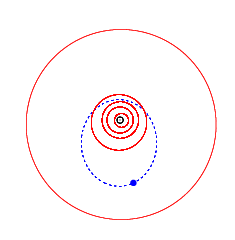
9950 ESA, provisional designation 1990 VB, is an eccentric asteroid and elongated near-Earth object of the Amor group, approximately 1.7 kilometers in diameter. It was discovered on 8 November 1990, by French astronomer Christian Pollas at the Centre de recherches en géodynamique et astrométrie (Cerga) at Caussols in southeastern France. It was named for the European Space Agency (ESA).
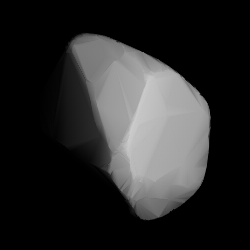
1768 Appenzella is a rare-type Nysian asteroid from the inner regions of the asteroid belt, approximately 20 kilometers in diameter. It was discovered on 23 September 1965, by Swiss astronomer Paul Wild at Zimmerwald Observatory near Bern, Switzerland. It was later named after the Swiss canton of Appenzell.

1333 Cevenola, provisional designation 1934 DA, is a binary Eunomian asteroid from the asteroid belt, approximately 15 kilometers in diameter. It was discovered on 20 February 1934, by French astronomer Odette Bancilhon at Algiers Observatory, Algeria in Northern Africa. It was named after the French mountain-range Cévennes, via the Occitan feminine adjective/demonym cevenòla.
2629 Rudra, provisional designation 1980 RB1, is a sizable Mars-crossing asteroid and slow rotator inside the asteroid belt, approximately 5.3 kilometers (3.3 miles) in diameter. It was discovered on 13 September 1980, by American astronomer Charles Kowal at the Palomar Observatory in California. The dark B-type asteroid has a long rotation period 123 hours and likely an elongated shape. It was named after Rudra from Hindu mythology.
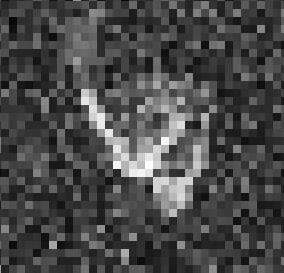
(192642) 1999 RD32, provisional designation: 1999 RD32, is an asteroid and suspected contact binary on an eccentric orbit, classified as a large near-Earth object and potentially hazardous asteroid of the Apollo group, approximately 5 kilometers (3 miles) in diameter. It was discovered on 8 September 1999, at a magnitude of 18, by astronomers of the LINEAR program using its 1-meter telescope at the Lincoln Laboratory's Experimental Test Site near Socorro, New Mexico, United States. The asteroid is likely of carbonaceous composition and has a rotation period of 17.08 hours.
2014 OL339 (also written 2014 OL339) is an Aten asteroid that is a temporary quasi-satellite of Earth, the fourth known Earth quasi-satellite.
(16960) 1998 QS52 (prov. designation:1998 QS52) is a stony asteroid on a highly eccentric orbit, classified as near-Earth object and potentially hazardous asteroid of the Apollo group, approximately 4.1 kilometers (2.5 mi) in diameter. It was discovered on 25 August 1998, by astronomers of the LINEAR program at Lincoln Laboratory's Experimental Test Site near Socorro, New Mexico, in the United States. This asteroid is one of the largest potentially hazardous asteroid known to exist.

594913 ꞌAylóꞌchaxnim (provisional designation 2020 AV2) is a large near-Earth asteroid discovered by the Zwicky Transient Facility on 4 January 2020. It is the first asteroid discovered to have an orbit completely within Venus's orbit, and is thus the first and only known member of the eponymous ꞌAylóꞌchaxnim (informally named Vatira before its discovery) population of Atira-class asteroids. ꞌAylóꞌchaxnim has the smallest known aphelion and third-smallest known semi-major axis among all asteroids. With an absolute magnitude approximately 16.2, the asteroid is expected to be larger than 1 km in diameter.
WASP-55 is a G-type main-sequence star about 980 light-years away. The star is much younger than the Sun at approximately 1.1+0.8
−0.6 billion years. WASP-55 is similar to the Sun in concentration of heavy elements.
WASP-42 is a K-type main-sequence star. Its surface temperature is 5315±79 K. WASP-42 is similar to the Sun in concentration of heavy elements, with metallicity ([Fe/H]) of 0.05±0.13, and is much older than the Sun at 11.3+1.5
−4.8 billion years. The star does exhibit starspot activity as is typical for its spectral class.

2011 UB256 is a small asteroid and Mars trojan orbiting near the L5 point of Mars (60 degrees behind Mars on its orbit).
References
- 1 2 "Minor Planet Discoverers (by number)". Minor Planet Center. 12 January 2017. Retrieved 19 January 2017.
- ↑ "About EuroNear". EURONEAR. 18 June 2019. Retrieved 18 June 2019.
- ↑ "Members". EURONEAR. 18 June 2019. Retrieved 18 June 2019.
- ↑ Popescu, Marcel M.; Vaduvescu, Ovidiu; de León, Julia; de la Fuente Marcos, Carlos; de la Fuente Marcos, Raúl; Stanescu, M. O.; Alarcon, M. R.; Serra-Ricart, Miquel; Licandro, Javier; Bertesteanu, D.; Predatu, M.; Curelaru, L; Barwell, F.; Jhass, K.; Boldea, C.; Aznar Macías, A.; Hudin, L.; Dumitru, B. A. (24 June 2023). "Discovery and physical characterization as the first response to a potential asteroid collision: The case of 2023 DZ2". Astronomy & Astrophysics. arXiv: 1905.12997 . Bibcode:2023arXiv230611347P. doi:10.1051/0004-6361/202346751.